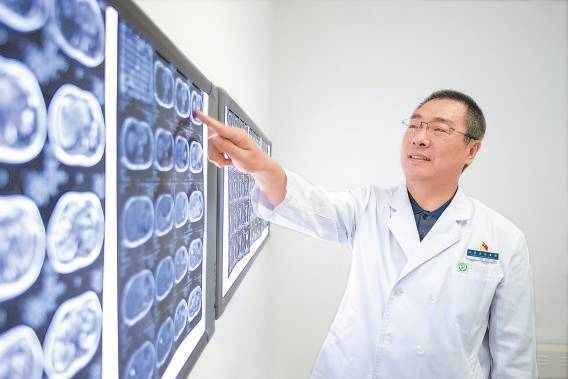Reporter: Wang Yaoqi, Chai Rong
At the Radiology Department of Beijing Friendship Hospital, Wang Zhenchang, the vice president of the hospital and director of the Department of Medical Imaging, Capital Medical University, holds a film reading session every morning, interpreting patient health information with colleagues and students, exchanging progress on research projects, and sharing the latest research inspirations. Despite the heavy workload of hospital management and teaching, Wang Zhenchang, persistent and striving for excellence, always maintains enthusiasm for medicine and scientific research.
Since joining the Communist Party of China in 1994, Wang Zhenchang has always regarded serving the people as his original intention and mission. “As a party member, one should make every effort to do everything well, including the diagnosis and treatment of patients, as well as medical and technological innovation,” he said.
In the eyes of some patients, the Radiology Department is not a “glamorous” department of the hospital. From being assigned to the Radiology Department after graduation from university, Wang Zhenchang has been silently working in this field. In over 30 years of clinical, research, and teaching work in medical imaging, he has led his team in a series of technological innovations in the field of head and neck imaging, winning a total of 7 national and provincial-level scientific and technological achievement awards and 32 patents, including two second prizes of national scientific and technological progress awards.
“I consider myself an information worker with a medical background,” Wang Zhenchang said. He analyzes image data or various physiological and pathological information of the human body every day. In the process of practice, he found that traditional ear imaging in clinical applications had issues such as unclear visibility, imprecision, incomprehensibility, as well as “seeing but not recognizing” and “displaying but not showing,” leading to low efficiency in the diagnosis of ear diseases through imaging, greatly restricting the effect of imaging in clinical diagnosis and treatment.
Therefore, Wang Zhenchang and his team started by creating standardized examination protocols and systematic evaluation models for ear imaging, improving the display capability of the pathophysiological structures of ear diseases. After a decade of effort, they successfully invented the world’s first micro-CT for bone quality, significantly improving the efficiency of imaging diagnosis and the application value of imaging in disease diagnosis and treatment, filling the gap in this field both domestically and internationally.
By proposing innovative imaging diagnostic algorithms, creating a multi-factor cooperative perception method for auditory conduction pathways, and establishing a multi-mode and multi-dimensional imaging diagnostic system, Wang Zhenchang has led his team in continuously surmounting technical bottlenecks and clinical challenges, driving the rapid development of China’s imaging diagnosis level, and leading the development of the imaging discipline to the forefront of the world. In November 2023, Wang Zhenchang was elected as an academician of the Chinese Academy of Engineering, truly deserving the title of a leader in the field of medical imaging.
“We hope to pioneer a new direction in the research of medical imaging devices – a direction of ‘specialization and precision’,” Wang Zhenchang stated, mentioning that he and his team are still working hard to explore and develop high-performance imaging equipment, striving to achieve a “corner overtaking” in the international medical imaging arena, allowing a wider range of patients to enjoy more precise and high-quality medical services.


